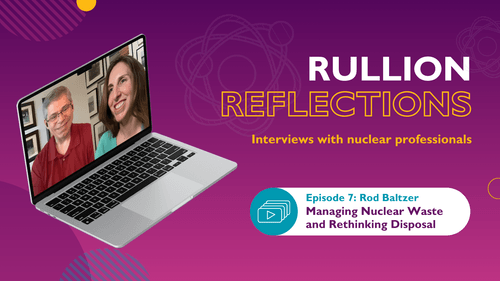Building Talent, Not Buying It: A Smarter Workforce Strategy
Traditional hiring models are increasingly struggling to meet the needs of modern organisations. Many critical infrastructure organisations across sectors like energy, transport, and utilities are hitting the same wall: rising recruitment costs, critical skills shortages, and new hires who struggle to adapt quickly enough to complex working environments.
While external recruitment will always have its place, it’s no longer enough on its own. It’s time to consider more balanced, sustainable approaches, like Train to Deploy (TTD), a workforce transformation model that enables organisations to look at retraining and growing the talent they need, reduce risk, and create more resilient teams.
What’s broken with the "Buy Talent" Model?
For years, the default hiring strategy has been reactive: hire fast, fill the gap, and hope it sticks. But for many organisations, that model is now showing cracks:
-
Niche skills are increasingly hard to find
-
The cost of contingent labour is rising
-
New hires often struggle with cultural fit or lack the hands-on readiness needed
Scarcity of Niche Skills
Whether it’s engineers in nuclear, software talent in tech, or skilled operatives in mechanical and electrical sectors, niche capabilities are becoming harder to source. As infrastructure projects grow in complexity and the transition to renewables accelerates, demand is far outpacing supply. This skills gap creates a bottleneck for delivery, drives up competition, and increases your exposure to project delays and rising costs.
High Recruitment Costs
Traditional hiring methods come with a hefty price tag – recruitment agency fees, advertising, vetting all the candidates, and onboarding – they all add up. And when hires don’t work out, the cost of starting over is even higher. In sectors managing large-scale infrastructure or utilities programmes, this cycle of churn can undermine everything from workforce morale to project timelines and long-term planning.
Cultural Misalignment
Technical expertise doesn’t guarantee success, especially in complex environments like energy sites, control rooms, or high-stake multi-contractor projects. If new hires struggle to adapt culturally or operationally, productivity dips, safety risks rise, and team dynamics suffer.
What "Building Talent" Really Looks Like
Behaviour-First Hiring
Traditional recruitment filters for qualifications and past experience. But this method often misses high-potential individuals who could thrive with the right development. Unlike other Hire Train Deploy models, Rullion’s Train to Deploy solution rethinks what makes someone the right fit and hiring for potential. Using behaviour-first hiring, or a train-to-match approach, Rullion focuses on mindset, adaptability, capability, and learning agility. In sectors like utilities, transport, and rail where on-the-ground collaboration is key, this approach helps to de-risk the process by bringing in talent that aligns with your organisational values, then upskilling or reskilling them in the technical areas your teams actually need.
Tailored Technical Development
Instead of waiting for the perfect candidate to emerge from the market, organisations can look to invest in upskilling and reskilling their existing teams to meet their specific business needs. Tailored development ensures training mirrors your actual operational requirements, right down to systems, tools, and standards. It’s a core step in delivering effective workforce transformation, ensuring your teams are equipped with the exact capabilities needed to perform and progress.
Long-Term Workforce Resilience
Organisations that build from within and invest in their people are far more resilient. When employees grow alongside the organisation, they develop deeper institutional knowledge and the ability to flex as priorities shift. This approach promotes long-term retention and creates a stable, adaptable workforce ready to meet future challenges head-on.
Why Train to Deploy is Different
Custom Workforce Pathways
Every business, site, and sector is different. What works in a retail logistics site won’t work in a nuclear-grade facility. Rullion’s TTD model adapts to your reality. They co-design specific training and workforce development pathways which you have full visibility over; this gives you full control in aligning training modules with your unique business objectives and challenges. Rullion does the heavy lifting, and you get work-ready people who have developed the exact skills and knowledge your company needs.
A Faster Route to Workforce Readiness
One of the key benefits of TTD services is its ability to rapidly prepare employees for new roles. While it may not be about “faster deployment” in the traditional sense, train and deploy solutions offer a quicker route to workforce readiness by focusing on specific, targeted skills development. This leads to a more efficient onboarding process and a workforce that is ready to contribute from day one, without the typical lag time that comes with traditional recruitment.
As part of a wider workforce transformation effort, this accelerated readiness helps organisations meet evolving demands without compromising on quality, safety, or team cohesion. It’s a smarter ramp-up for complex environments where getting it right the first-time matters.
Social Value and Diversity Built-In
A key value of TTD is its ability to break down traditional barriers and broaden access to talent. Rullion believes in inclusion without limits. If someone can demonstrate they’ve got the right mindset and behaviours, then Rullion will build the skillset, regardless of what role or industry that person previously worked in. This means that their Train to Deploy approach is capable of building truly inclusive talent pools, holding the doors open to those with the potential to thrive, regardless of their situation. This is the power of a real workforce transformation strategy, giving organisations the opportunity to do things differently while strategically expanding their talent pool to better reflect the communities and industries they serve. It creates scalable, inclusive, and resilient workforces ready to meet the demands of tomorrow.
Building the For the Future, Not Just Today
Organisations need more than just quick fixes to their talent challenges. The future of workforce development lies in building talent from within, investing in the potential of existing employees and creating an environment where growth and adaptability thrive. Train to Deploy (TTD) provides a clear, sustainable path to achieving this. It’s a workforce transformation model designed to reduce reliance on external recruitment while building resilient, high-performing teams that keep your organisation ahead of the curve.
Want to explore how train to deploy could work for your sector?
Visit Rullion’s Train to Deploy solution page or book a discovery call with one of their consultants to see how Rullion can help you get work done.





